
views
Practicing on Your Own
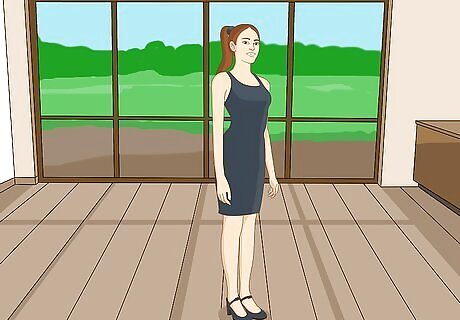
Stand up straight with your shoulders back. Hold your head high with your spine straight and your chin forward. Engage your core to roll your shoulders back and keep your neck in line with your spine. The better posture you have, the more confident you’ll look in your dancing ability.
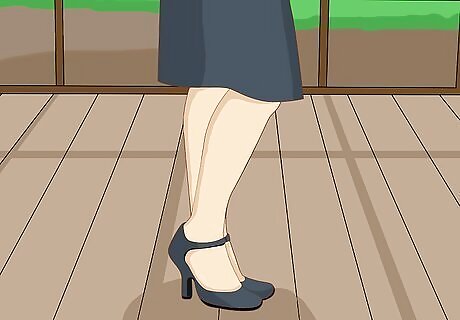
Bend your knees slightly to put a bounce in your step. As you stand up straight, bend your knees just slightly so you can bounce up and down as you move your feet. The tango is all about fluidity, and you can’t be fluid if your knees are locked in place. If you lock your knees and keep your legs straight, you might end up looking stiff as you dance.
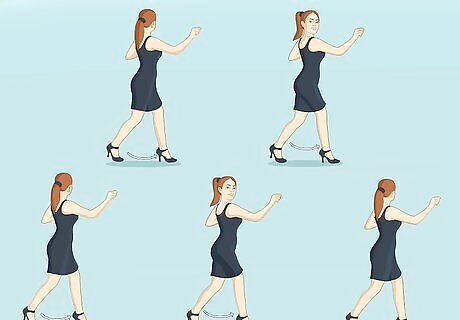
Master the 5 leading steps if you’re the leading partner. The leading partner is the one who will be leading the dance, and their partner will follow. If you’d like to be a leading partner, practice: Forward with your left foot Forward with your right foot Forward with left foot To the right with your right foot Feet together, moving left to meet right. That's it! Repeat!
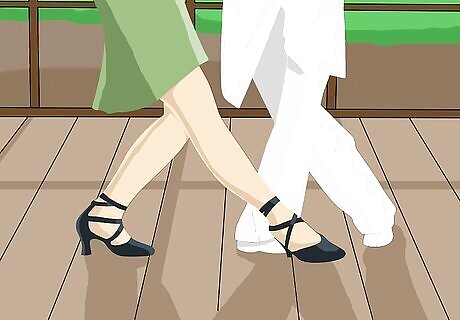
Mirror the leading steps if you’re the following partner. The following partner mimics the movements of the leading partner, only on the opposite foot going the opposite direction. If you want to learn the following partner’s moves, practice:Tip: You may want to learn both the leading and the following movements so you can switch back and forth with new partners. Backward with your right foot Backward with your left foot Backward with your right foot To the left with your left foot Feet together, moving right to meet left. Ta da! Repeat!

Move your feet in the pattern “slow, slow, quick, quick, slow.” Each step that you take has a different speed. The first 2 steps should be slow, the next 2 are quick, and the last one is slow again. As you practice more and listen to the music, this will come naturally to you. Thinking about the speed will help you match the rhythm of your partner’s movements as you dance.
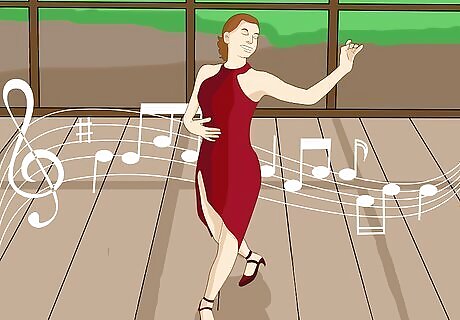
Dance to the beat of the music. Listen to some tango music and find the rhythm to move your feet to. Practice stepping to the beat so that you can do the movements with whatever song you throw on. Di Sarli, Canaro, Pugliese, D'Arienzo, and Laurenz are all artists that make great music to tango to.
Dancing with a Partner
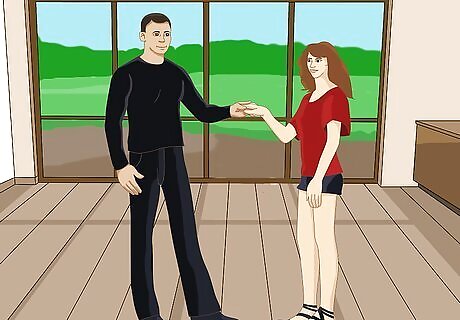
Decide who will be leading and who will be following. Traditionally, the male partner leads and the female partner follows. However, you can choose whoever you’d like as your partner and talk to them about leading or following, depending on your preference. If you’re just starting out, you might want to take the following position since you can mimic your partner’s moves.
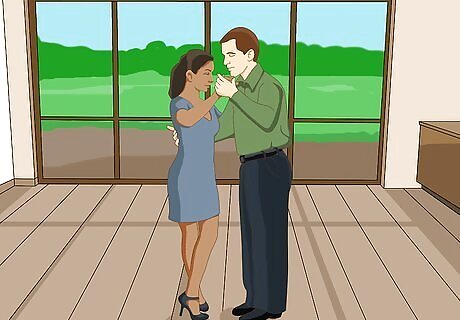
Place one hand on your partner’s back. Stand about 6 inches (15 cm) away from your partner facing each other. If you are the leading partner, place your right hand on your partner’s back just behind their shoulder. If you’re the following partner, put your left hand on your partner’s back in the same position.Tip: If you’re not familiar with your partner, standing this close to them can feel a little weird at first. Just remember that everyone is there to dance and have a good time.
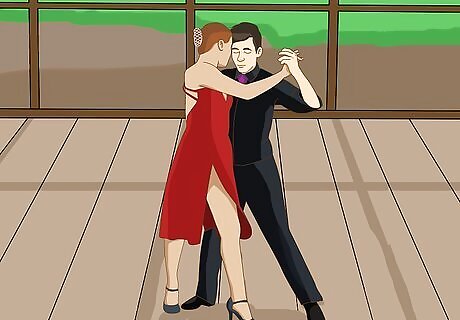
Hold your other hand up and grab your partner’s free hand. If you have your right hand on your partner’s back, raise your left hand at about shoulder-height to the side. If you have your left hand on your partner’s back, raise your right hand to meet your partner’s free hand. Grasp it firmly to keep your hands in the air as you dance. Holding your arms up like this can help correct your posture as you move around.

Lead your partner around the room if you are the leader. If you’ve chosen the lead partner position, you get to choose where you and your partner go as you dance. If you’re in a large dance hall, look out for other dancers as you move around the room, rotating in a counterclockwise circle. If you’re taking a tango dance class, the teacher might direct you on which way to go so you don’t run into other people.
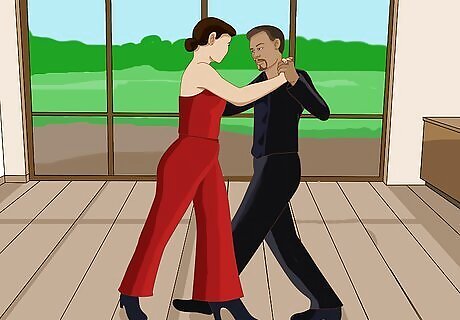
Follow your partner’s moves if you’re the follower. If you are in the following position, you don’t need to worry about where to go. Stay connected with your partner and follow their footsteps as you move around the room while dancing. Don’t be afraid to ask your dancing partner a question or tell them to slow down if you need to.
Mastering the Dance
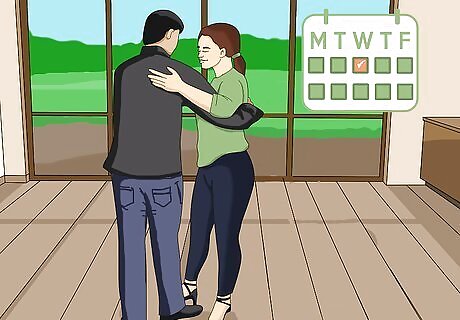
Practice the tango on a regular basis. You can only get better at something if you practice it often. Try to tango at least once per week, if not more, on your own or with other people. Soon, you’ll be able to tango in your sleep! Try not to get discouraged if it takes you a little while to master the dance. Learning a new skill takes time, and you already know more about the tango than most people!
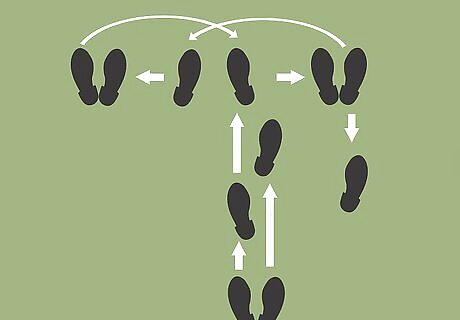
Plan ahead if you’re the leading partner. Since you are the one pushing in a direction, try to think at least 8 steps ahead of time. That way, you won’t be caught off guard or have trouble thinking of what comes next. It may be helpful to learn a specific set of movements either from an instructor or an online video.
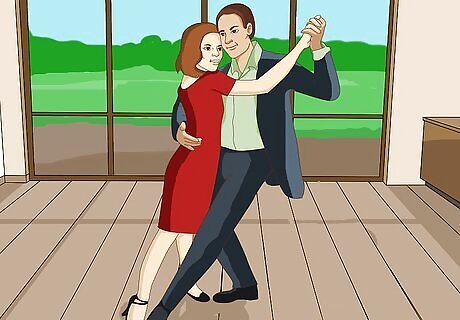
Trust your partner’s movements if you’re the following partner. If you’re the following partner, you get to have the peace of mind that you just have to go with the flow. The easiest way to know that you're capable of depending on your partner is to feel their weight. Feel where it's going, feel where it is between the moves, and balance with them. Try sticking with one partner so you can get used to their weight and their movements.

Add swivels and turns as you move to make the dance more interesting. Now have you and your partner facing the side -- this is called the promenade. Instead of thinking forward and back, you're thinking to the left or right. This way you can add in swivels and turns. In most tango forms, the follower swivels on the axis while the leader stays mostly in place. For example, if you are the follower, you take two steps to the right (slow, slow). Immediately after that second step (and before the third), throw your torso to face the left. Then you resume moving backward. For turns, the leader turns toward his partner 180 degrees on the first quick step and the one following steps between his feet. Now we're getting fancy!
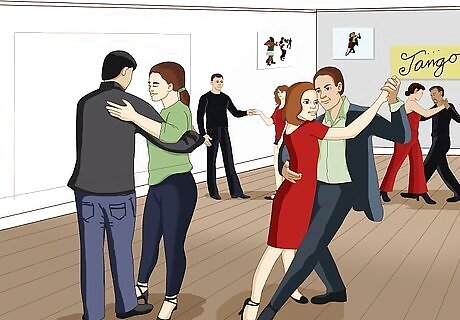
Join a tango class to practice with other people. Once you learn the basics, you can practice with other people who also want to learn the tango. You can bring a partner along with you or go alone and couple up with someone there.Tip: You can also look for tango dance parties, called milongas, if you just want to show off your skills! Try looking for a class that meets once a week so you can have a lot of time to practice.


















Comments
0 comment